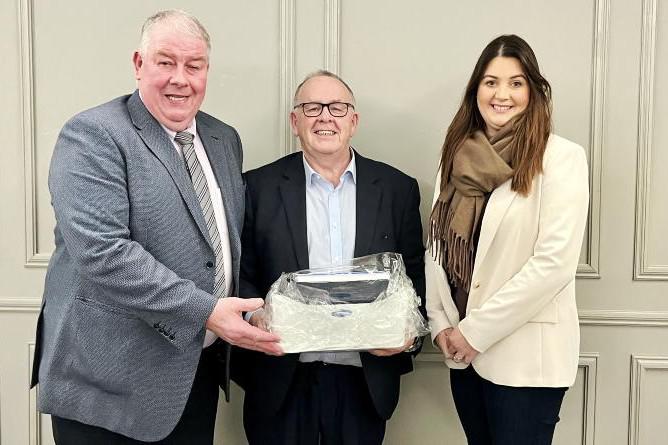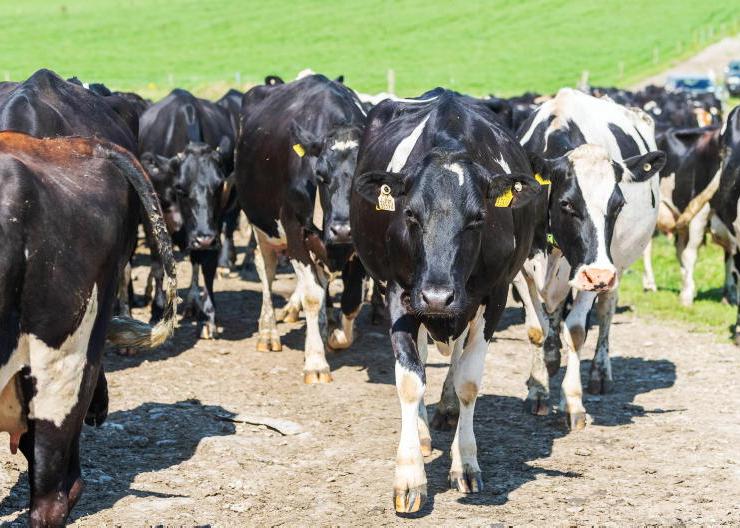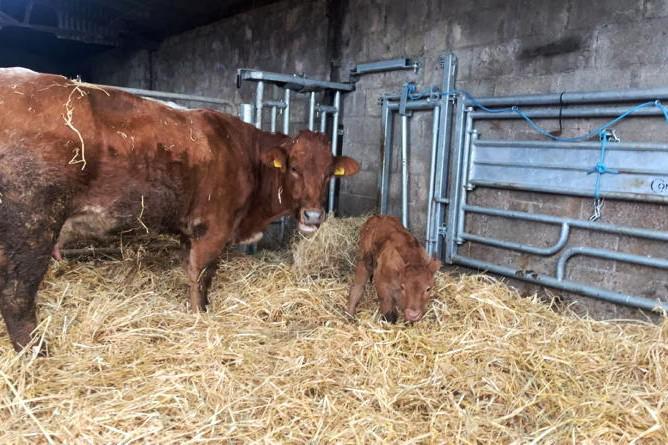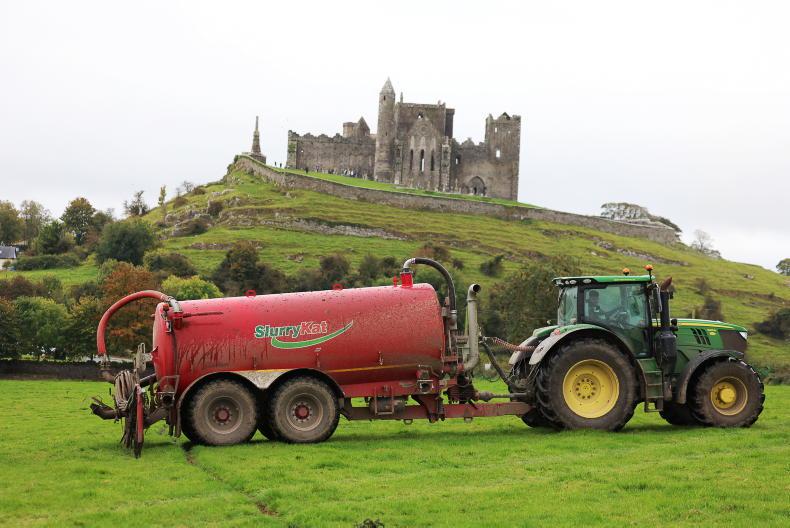Unfortunately it may be the last year farmers get to learn, listen and hear the mistakes at Greenfield Farm Kilkenny, as two of the shareholders seem intent in forcing the farm to close its doors. The Agricultural Trust is opposed to this as it believes there are still considerable learnings farmers can take from this project.
When it was first made public that Glanbia and the landowners wanted to terminate the project, Glanbia chair Martin Keane said: “We feel the project has served its purpose and that now is an appropriate time to bring the project to a close. There’s a new challenge now in addressing issues like labour and sustainability.”
As a result, farm manager David Fogarty and Teagasc have left the management and running of the farm as of 31 May 2019.
It’s fair to say 2019 was shaping up and still is on track to be a real good year in production and profit terms – 2018 was the opposite. In 2018 the farm used all its cash reserves as the snow in spring 2018 and the drought in summer 2018 hit grass growth hard.
The cost to the business was huge, as all cash reserves and more were used to purchase replacement feed and winter feed
From June to late September 2018, forage and meal were supplemented to make up for the grass shortage on the farm.
The cost to the business was huge, as all cash reserves and more were used to purchase replacement feed and winter feed. The lessons for any developing business were big. Without the cash reserve, the business would have had to go back to the bank for a loan. Along with this, the need to have a significant reserve of silage in place was highlighted, and the physical and mental drain on labour that a long dry summer can have was also evident. These are three huge learnings that could significantly affect running costs in any particular year.
Farmers have heard it all before, but how many dairy farmers actually follow through in terms of building a cash or feed reserve? More often than not other issues such as family education, machinery, farm buildings, holidays or tax get in the way on family farms. However, for new and developing businesses that are farming on either a very wet or a very dry farm, you need to have a plan B in terms of cash and/or a feed reserve. It’s like fire insurance – you don’t want to pay the premium, but, when the house burns down you’re glad you did. Greenfield Farm experienced droughts and floods before, but nothing like as long or severe as what was experienced last year. Will it happen again? You can’t rule it out.
The resilience of the grass plant is phenomenal
There is no doubt the quick turnaround of the business in 2019 was helped by closing off the drought and feed issues in 2018, and not letting them drag into 2019 – another lesson. Autumn 2018 grass growth rates were excellent and grass silage was sourced for winter feed in advance of calving in February 2019. The weather and feed supply came right in early 2019 and the farm took off again.
The resilience of the grass plant is phenomenal. Yes, 2018 came at a cost to the business but the upside for 2019 is significant and it will begin to repay some of the extra costs of 2018. Think about it – the same grass plant is still growing despite the fact there was little or no rain on the farm from June to October 2018.
The same mix of grass and clover is providing the feed for 2019 now that a more normal weather pattern has returned. From January to June in 2018 the farm grew 4.8t DM/ha of grass, the same figure for 2019 is 4.7 t DM/ha. So while the system is fragile in the short term when weather goes against farmers, long term it’s resilient.
Milk production to date for 2019 is well up on 2018 on this farm and at a national level. On this farm the 2019 milk sales to date are up month on month (see Figure 1) with almost 30% more milk delivered compared to 2018.
This extra milk is a reflection of higher meal feeding to hold a higher stocking rate on the grazing area, better grazing conditions this spring and a more mature herd. To the end of June this year, 140t of meal has been purchased at a cost of about €42,200.
Current performance
The Greenfield herd are currently producing about 2kg milk solids per cow (24 litres at 4.52% fat and 3.7% protein) on 2kg of meal per cow and grazed grass. The 40.5ha of first-cut silage was harvested in mid-June in dry conditions. Growth rate was reduced for a week or so after that with the very dry conditions, but rain has allowed growth rate pick up again since, with growth rates of 60kg to 70kg per day recorded.
Over last weekend, only 8mm of rain was recorded compared with parts of Cork that nearly got 40mm. The area stopped for second-cut silage has been fertilised with CAN and potash. The CAN Super Net with 27% nitrogen plus 3.7% sulphur was purchased at €280/t. Muriate of potash (0:0:50) was purchased at €380 per tonne.
Breeding continues. As reported, the sexed semen product worked well on the 98 cows involved with the trial on this farm, with similar conception rates (53%) for the sexed product when compared to the ordinary, unsexed semen.
The Greenfield project started in late 2009. A company was set up called Greenfield Dairy Partners Limited and this company took on a land lease for 15 years. The Department of Agriculture allowed milk quota from the national restructuring milk pool be transferred to the farm so that messages and lessons on conversion and expansion could be shared. A long-term (€850,000) loan was taken out from AIB to be repaid over the 15-year term.
In late 2009, the first tillage fields were converted from long-term cereals to grass swards and new investment began on the milking parlour, wood chip stand-off pad, farm roadways and fencing.
Essentially, as of 31 May 2019, nine years and five months after the first milk was produced on the farm, it has been forced to close its doors to the public
Shareholders invested over €1.5m on the farm over the last nine years with a view to depreciating capital investment to zero over the 15 years.
In early 2010, the first cows were milked on the farm as cows and first-calving heifers were sourced from farms around Ireland.
Essentially, as of 31 May 2019, nine years and five months after the first milk was produced on the farm, it has been forced to close its doors to the public.
Glanbia and the Phelan family have decided they want the project to finish, so effectively they have a simple majority over the third shareholder, the Agricultural Trust.
The three shareholders continue in discussions as to the future of the farm
The Agricultural Trust offered to take over the remaining duration of the lease to allow it fulfil the terms of the land lease and continue to share the knowledge with dairy farmers, but both other parties have rejected this offer.
The three shareholders continue in discussions as to the future of the farm. Currently the farm is under the control of an interim management group from the three shareholders, but it continues to trade as the Greenfield Dairy Partners Limited. The long-term loan is down to €400,000 and the farm is on track to have one of its most profitable years in 2019, with expected profit over €100,000 after all costs are paid.









SHARING OPTIONS